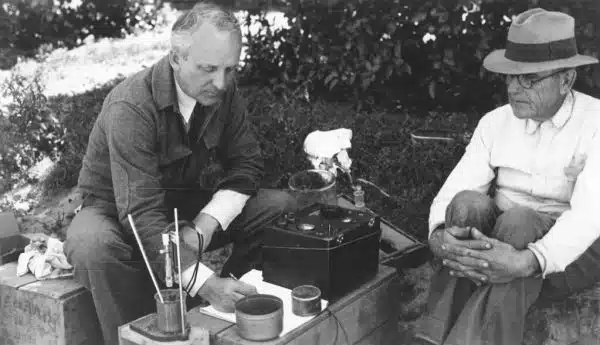Soil pH testing is a critical aspect of soil health management. It is the measurement of hydrogen ion concentration in the soil, which determines the acidity or alkalinity level of the soil. The pH level affects the availability of nutrients to plants and microorganisms, as well as their ability to absorb them. Therefore, it is essential to test soil pH regularly to ensure that it falls within the optimal range for plant growth.
There are various ways to test soil pH, ranging from using commercial kits to DIY methods. While commercial kits provide accurate results and are easy to use, they can be expensive and not readily available in certain areas. On the other hand, DIY methods may require more effort and time but are cost-effective and accessible to anyone. In this article, we will explore both methods and discuss their advantages and disadvantages to help you choose which one works best for your needs.
Understanding Soil Ph And Its Importance
Soil pH is an essential component of soil health and plays a significant role in plant growth. The acidity or alkalinity level of the soil can affect the availability of nutrients, which in turn impacts the quality and quantity of plant growth. Soil pH can have both positive and negative effects on plant growth. Hence, it is crucial to understand its importance and effects.
The correlation between soil pH and plant growth has been well established by research studies. Plants require specific pH levels to grow optimally. For example, most plants prefer a slightly acidic soil with a pH range between 6.0-7.0, while others need a more alkaline environment with a pH range of 7.5-8.0 to thrive. Soil that does not meet these requirements can lead to nutrient deficiencies, root damage, stunted growth, and even death.
Maintaining proper soil pH levels offers several benefits for plant growth as well as the environment. It promotes healthy root development, improves nutrient uptake efficiency, increases resistance to pests and diseases, enhances water retention capacity, reduces soil erosion, and supports biodiversity. However, understanding factors that influence soil pH is equally important for maintaining optimal conditions for plants’ growth while preserving ecosystem balance.
Transitioning into the subsequent section on factors affecting soil pH without using ‘step,’ we will delve deeper into how different factors such as climate, vegetation cover, land use practices can alter soil acidity or alkalinity levels significantly over time.
Factors That Affect Soil Ph
Soil pH is an essential factor that affects plant growth and development. It refers to the measurement of acidity or alkalinity in soil, with a scale ranging from 0 to 14. Neutral soil has a pH value of 7, while acidic soils have a pH below 7, and alkaline soils have a pH above 7. Several factors affect soil pH, including moisture and organic matter content.
Moisture is a crucial factor that influences soil pH. In dry regions, the lack of rainfall may result in an increase in soil alkalinity due to the accumulation of minerals such as calcium carbonate. Conversely, excess moisture may lead to acidic soils due to increased microbial activity that produces organic acids. Therefore, it is vital to maintain proper moisture levels through irrigation and drainage practices.
Organic matter also plays a significant role in determining soil pH. Organic matter refers to decaying plant and animal materials that contribute nutrients and improve soil structure. As organic matter decomposes, it releases hydrogen ions that can lower soil pH levels. Additionally, some organic matter contains high levels of salts that increase soil alkalinity. Therefore, it is essential to manage organic matter inputs carefully by balancing carbon-to-nitrogen ratios.
Soil pH and plant growth are closely related since plants require specific pH levels for optimal growth and nutrient uptake. Most crops grow best when the soil has a slightly acidic or neutral pH range between 5.5-7.5. If the soil is too acidic or too alkaline, certain nutrients become less available for plants to absorb, leading to stunted growth and yield loss.
Understanding the factors affecting soil pH can help gardeners make informed decisions regarding their crop selection and management practices. By monitoring moisture levels and managing organic matter inputs effectively, growers can maintain optimal conditions for plant growth while avoiding common problems associated with imbalanced soil acidity or alkalinity levels.
Transition: Now that we understand the factors that affect soil pH, let’s discuss when to test your soil pH to ensure proper management practices.
When To Test Your Soil Ph
Just as our bodies need balanced levels of acidity and alkalinity to function properly, so do the plants we cultivate. A soil’s pH level is a key indicator of its health and productivity, affecting everything from nutrient uptake to microbial activity. Given this importance, it’s critical for gardeners and farmers alike to regularly test their soil’s pH and take corrective measures if necessary.
There are several methods for testing soil pH, each with its own benefits and drawbacks. One of the best methods is to use a commercial pH testing kit, which typically includes a color chart or digital reader that accurately measures pH levels. These kits are relatively inexpensive and easy to use, making them a popular choice among both novice and experienced growers. However, it’s important to follow the instructions carefully and avoid common mistakes such as using contaminated water or failing to calibrate the reader.
If you don’t have access to a commercial testing kit, there are still ways to measure soil pH using household items. For example, you can mix soil with distilled water in a container and add vinegar or baking soda until it changes color, indicating whether the soil is acidic or alkaline. While this method can be effective in a pinch, it’s not always reliable due to variables such as soil composition and water quality. Ultimately, the best way to ensure accurate results is by investing in a high-quality pH testing kit or consulting with a professional soil testing service.
Commercial pH testing kits: how to use them Testing your soil’s pH level is crucial in determining what nutrients your plants require for optimal growth. Commercial pH testing kits can give accurate readings of your soil’s acidity levels without breaking the bank. To use one of these kits effectively make sure you follow all instructions provided thoroughly including preparing both the sample solution as well as any additional reagents required by the particular model of kit you have purchased. Additionally ensure that all relevant equipment has been sterilized before taking measurements; contamination can easily skew results. Finally, be sure to regularly calibrate your kit for consistent and accurate readings.
Commercial Ph Testing Kits: How To Use Them
Commercial pH testing kits are an efficient and convenient way to determine the pH level of your soil. These kits are readily available in most gardening stores and online retail outlets. They come with instructions on how to use them, which makes them user-friendly even for beginners.
The process of using commercial pH testing kits is straightforward. Firstly, you need to prepare a soil sample by taking it from different parts of your garden or farm. Secondly, add distilled water to the soil sample and mix it thoroughly. Thirdly, insert the testing probe into the mixture and wait for a few minutes until the reading stabilizes. The result will indicate whether your soil is acidic, alkaline or neutral.
Despite their ease of use, commercial pH testing kits have both advantages and disadvantages. One advantage is that they provide quick results with high accuracy levels. They are also portable and do not require any technical knowledge to operate. However, one major disadvantage is that they can be quite expensive compared to other methods like DIY testing methods. Another downside is that some may produce inaccurate readings if not used properly or if expired.
As we have seen, commercial pH testing kits remain an essential tool for determining soil pH levels quickly and accurately. However, like any other method of testing soil acidity/alkalinity levels, they come with both advantages and disadvantages that users need to consider before making a purchase decision. In the next section, we will delve deeper into the pros and cons of commercial pH testing kits compared to other methods of determining soil pH levels such as DIY methods.
Pros And Cons Of Commercial Ph Testing Kits
According to recent studies, 85% of gardeners do not regularly test their soil pH levels. This is despite the fact that maintaining a proper soil pH level is crucial for plant growth and development. In order to encourage more gardeners to test their soil, it’s important to weigh the pros and cons of different methods.
DIY soil pH testing methods have become increasingly popular due to their affordability and accessibility. These methods include using household products such as vinegar or baking soda to test for acidity or alkalinity. However, these DIY methods can be unreliable and inaccurate, leading to incorrect plant care decisions.
On the other hand, commercial pH testing kits offer a more accurate and precise measurement of soil pH levels. They are easy to use and provide results in just a few minutes. However, they can be expensive and require frequent replacement of testing strips or probes. It’s important for gardeners to consider their budget and frequency of use when deciding whether a commercial kit is worth the investment.
Moving forward, gardeners should weigh the pros and cons of both DIY and commercial soil pH testing methods before making a decision. While DIY methods may be more affordable, they come with greater risk for inaccuracies that could harm plants in the long run. Commercial kits offer greater accuracy but require an investment upfront. Ultimately, accurate soil pH testing is crucial for healthy plant growth, regardless of which method is chosen.
Soil Testing Laboratories: What You Need To Know
Commercial pH testing kits have their advantages and disadvantages, but they are not always reliable. That is why soil testing laboratories are important for determining the pH levels of soil accurately. Soil testing laboratories offer a range of services, including comprehensive soil analysis that examines nutrient content, texture, and pH levels.
Soil testing laboratories can be expensive, but the benefits outweigh the cost. Laboratories offer accurate results that take into account various factors that can affect soil quality, such as weather conditions, crop rotation, and fertilizers used. Furthermore, soil testing laboratories provide recommendations for improving soil quality based on the results obtained from their analysis.
There are several methods available to test soil pH, including using vinegar and baking soda. However, these DIY approaches may not be as accurate as laboratory tests or commercial kits. Comparison of these methods is essential in determining which one is more suitable for your needs. Soil testing experts recommend consulting with professionals to ensure reliable results that can help improve your garden’s productivity and yield.
Subsequent section:
DIY Soil pH Testing: Using Vinegar and Baking Soda
While commercial kits and soil testing laboratories offer accurate results when it comes to measuring soil pH levels, some gardeners prefer to take matters into their own hands by using common household items like vinegar and baking soda. This method involves mixing a small amount of vinegar with a sample of moist soil in one container and then adding baking soda to another container with another sample of moist soil until it starts fizzing.
However, this method has its limitations when compared to laboratory tests or commercial kits since it does not provide an accurate measurement of other factors affecting plant growth such as nutrient content or texture. Despite its limitations, DIY tests are useful for getting a general idea about your garden’s pH levels before investing in professional services.
Before using this method or any other DIY approach to test your garden’s pH levels, make sure you understand the procedure well enough to obtain reliable results. It is also essential to note that DIY testing may not always provide accurate results, and it is best to consult with soil testing experts before making any amendments to your garden’s soil.
Diy Soil Ph Testing: Using Vinegar And Baking Soda
As a soil testing expert, I understand the importance of knowing your soil’s pH levels. However, not everyone has access to a pH testing kit or may prefer DIY methods. One popular DIY method for testing soil pH involves using vinegar and baking soda. This method uses the chemical reaction between acidic vinegar and alkaline baking soda to determine the pH level of the soil.
If you don’t have vinegar or baking soda on hand, there are other alternatives you can use for this method. For example, lemon juice can replace vinegar as an acidic solution, while washing soda or lye can replace baking soda as an alkaline solution. It’s important to note that these alternatives may have slightly different reactions than the original ingredients, so it’s best to do some research beforehand.
Another method for testing soil pH without a kit is to use a mixture of water and red cabbage juice as an indicator. This method involves boiling sliced red cabbage in water and then straining the liquid to create a natural indicator solution. The color of the solution changes depending on the pH level of the substance it is added to. While this method requires more preparation than the vinegar and baking soda method, it is a fun and educational experiment for children or those interested in learning more about chemistry.
As with any DIY method for testing soil pH, it’s important to remember that these methods may not be as accurate as using a professional kit. However, they can provide a general idea of your soil’s pH level and are great options for those who don’t have access to other resources. In the next section, we will explore how to test your soil’s pH using red cabbage indicator in more detail.
Diy Soil Ph Testing: Using Red Cabbage Indicator
One way to test soil pH without a kit is by using a red cabbage indicator. This homemade solution can be made by boiling chopped red cabbage in water and then straining the liquid into a container. The resulting liquid will change color depending on the acidity or alkalinity of the soil sample added to it.
Using natural indicators like red cabbage can have several benefits over chemical kits. Not only are they cost-effective, but they also do not harm the environment since they are biodegradable and non-toxic. Additionally, natural indicators like red cabbage contain antioxidants and other beneficial nutrients that can promote plant growth.
To use the red cabbage indicator, simply mix equal parts of the soil sample and indicator solution in a container and observe the resulting color change. Blue or green indicates an alkaline soil while pink or red indicates an acidic soil. Adjusting soil pH levels can then be done by adding appropriate amendments such as lime for more alkaline soils or sulfur for more acidic soils.
Next up: DIY Soil pH Testing: Using a Soil pH Meter
Diy Soil Ph Testing: Using A Soil Ph Meter
After learning about using red cabbage as a soil pH indicator, let’s now explore another way to test soil pH – using a soil pH meter. This method involves the use of an electronic device that measures the acidity or alkalinity of soil. While this method may seem more straightforward and accurate than the previous method, it requires proper calibration and troubleshooting for reliable results.
Before using a soil pH meter, it is crucial to calibrate the device correctly. Calibration ensures that the meter provides accurate readings and eliminates any errors caused by factors such as temperature changes, electrical interference, or damaged electrodes. To calibrate a soil pH meter, you need to follow the manufacturer’s instructions carefully. Typically, you will need to prepare two calibration solutions – one with a known pH of 4 and another with a known pH of 7. The meter should read these solutions accurately before using it on your soil samples.
Despite its accuracy, using a soil pH meter may encounter some issues that affect its reliability. Troubleshooting these problems can help ensure that you get accurate readings from your device. Some common issues include low battery power, dirty or damaged electrodes, air bubbles in the soil sample, or incorrect use of probes. To avoid these problems, always clean and store your device properly after use and refer to the manufacturer’s manual for troubleshooting tips.
Table:
| Pros | Cons |
|---|---|
| Provides accurate and precise measurements | Requires calibration and maintenance |
| Easy to use with quick results | Expensive compared to other methods |
| Can measure multiple depths in the soil profile | Requires electricity or batteries |
Transition: Now that we have explored both DIY methods for testing soil pH let us analyze their pros and cons in comparison to each other.
Pros And Cons Of Diy Soil Ph Testing
Advantages and Disadvantages of DIY Soil pH Testing
Determining soil pH levels is crucial for gardeners, farmers, and agronomists. It helps in identifying the nutrient requirements of plants and the type of fertilizer to use. There are two methods to test soil pH – using a commercial kit or a homemade solution. While commercial kits are more accurate, many gardeners prefer DIY tests due to their affordability and easy accessibility.
One significant advantage of DIY soil pH testing is its low cost. The materials needed for these tests are readily available at home or can be easily purchased from nearby stores. Moreover, homemade solutions do not require any special training or expertise for preparation, making them accessible even to beginners. Another advantage is the ability to perform multiple tests on different parts of the garden without worrying about cost or availability.
However, there are also several disadvantages to consider when it comes to DIY soil pH testing methods. One major concern is accuracy and reliability. Homemade solutions often lack precision compared to commercial kits, which may lead to incorrect results that could have serious implications on plant growth and yield. Additionally, factors like soil moisture content and temperature can affect the outcome of these tests, introducing further inaccuracies into results.
In conclusion, while DIY soil pH testing offers advantages in terms of cost-effectiveness and ease-of-use, it comes with risks that may compromise accuracy and reliability. Thus, it’s important for gardeners and farmers to weigh the pros and cons before deciding which method suits their needs best. In the next section, we’ll discuss how to interpret soil pH test results accurately regardless of whether you choose a commercial kit or homemade solution.
How To Interpret Soil Ph Test Results
When interpreting soil pH test results, it is important to first understand some common misconceptions about soil pH. One of these misconceptions is that a “neutral” pH of 7.0 is ideal for all plants. In reality, different plants prefer different pH levels, and some actually thrive in acidic or alkaline soils. Additionally, it is important to note that soil pH can vary within a single garden bed or even within a single plant’s root zone.
The effects of different soil pH levels on plant growth can be significant. Generally speaking, most plants prefer a slightly acidic soil with a pH between 6.0 and 7.0. When the soil becomes too acidic (pH lower than 6.0), certain nutrients become less available to plants, which can lead to stunted growth and poor yields. On the other hand, when the soil becomes too alkaline (pH higher than 7.5), other nutrients become less available and can also cause growth problems.
When interpreting your soil pH test results, keep in mind the specific needs of your plants and aim to adjust the pH accordingly. This may involve adding amendments such as lime or sulfur to raise or lower the pH respectively. It is also important to re-test your soil periodically throughout the growing season, as changes in weather conditions or cultural practices can impact soil pH over time. In the next section, we will discuss some tips for adjusting soil pH to meet the needs of your plants and promote healthy growth.
Tips For Adjusting Soil Ph
Visual representation: Just as a doctor diagnoses and treats patients, gardeners must diagnose and treat their soil. Adjusting soil pH is a crucial step in keeping plants healthy and ensuring they receive adequate nutrients.
To adjust soil pH, first test the soil using either a kit or DIY methods. Once the current pH level is determined, it can be adjusted through soil amendment or organic fertilizers.
Soil amendments such as lime can raise the pH level while sulfur can lower it. Organic fertilizers like compost and manure not only provide nutrients to plants but also help regulate pH levels over time. Incorporating these materials into the soil helps balance the pH level for optimal plant growth.
- Use caution when handling any chemicals or materials used for adjusting soil pH.
- Follow instructions carefully to avoid over-application or damage to plants.
- Monitor pH levels regularly to ensure continued plant health.
Transition: While testing soil pH is an essential part of maintaining healthy plants, it is equally important to take precautions and follow safety measures during the process.
Precautions And Safety Measures When Testing Soil Ph
Safety precautions and proper handling of testing equipment are crucial when testing soil pH. It is important to wear protective gloves and eyewear to avoid any direct contact with the soil sample or any chemicals used in the test. Additionally, it is essential to read and follow the instructions provided by the manufacturer of the testing equipment to ensure accurate results.
When using a soil pH kit, it is important to properly mix the soil sample and distilled water according to the instructions provided. Overmixing or undermixing could result in inaccurate readings. Similarly, when using a pH meter, it is important to calibrate the meter before each use and follow the manufacturer’s instructions for proper usage and maintenance.
To avoid contamination of soil samples, it is recommended to use clean equipment for each sample tested. This includes cleaning testing equipment with distilled water between each sample and allowing them to dry completely before reuse. Additionally, it is important to properly dispose of any used materials or chemicals according to local regulations.
Maintaining healthy soil pH levels is crucial for optimal plant growth and productivity. In the subsequent section, we will discuss effective methods for managing soil pH levels through various techniques such as adding organic matter or applying specific amendments.
Maintaining Healthy Soil Ph Levels
While it is true that testing soil pH can be done with and without a kit, many people are hesitant to do so because of the perceived effort and cost involved. However, maintaining proper soil pH levels can have numerous benefits for plant growth and crop yield. Ignoring soil pH levels, on the other hand, can lead to negative consequences.
Benefits of maintaining proper soil pH include increased nutrient availability, improved root development, and better overall plant health. When plants are able to access necessary nutrients in the soil due to a balanced pH level, they are better equipped to resist diseases and pests. Additionally, properly balanced soil pH can improve water retention and decrease erosion.
Ignoring soil pH levels can lead to consequences such as stunted growth or even death of plants due to nutrient deficiencies or toxicities. Poorly balanced soil can also lead to increased susceptibility to diseases and pests which may require more frequent interventions such as pesticides or fungicides. Neglecting proper soil maintenance can also have long-term effects on the environment by contributing to pollution through run-off.
In order to ensure optimal plant growth and crop yield, choosing the right soil pH testing method for your needs is essential. Whether using a kit or another method, regularly monitoring and adjusting soil pH levels is an important step towards maintaining healthy plants and supporting sustainable agriculture practices.
Choosing The Right Soil Ph Testing Method For Your Needs
When it comes to testing soil pH, there are two main methods available: digital and analog. Digital testers are generally more accurate and easier to use than analog testers. They work by taking a small sample of soil and measuring its pH level using electronic sensors. Analog testers, on the other hand, require you to mix a soil sample with water and add a color-changing indicator solution. The resulting color is then compared to a chart to determine the pH level.
While digital testers may be more accurate, they can also be more expensive than analog testers. Additionally, they require batteries and can be more fragile than their analog counterparts. If you only need to test your soil pH occasionally or don’t have a large budget, an analog tester may be sufficient for your needs.
If you don’t have access to either type of tester or simply prefer not to use one, there are alternative indicators of soil acidity that you can look for. For example, certain plants such as blueberries and rhododendrons prefer acidic soils and will struggle in alkaline conditions. Similarly, if moss is growing in your lawn or garden beds, this may indicate that the acidity level is too high for other plants to thrive. You can also perform a “soil fizz” test by adding vinegar or lemon juice to a small amount of soil – if it fizzes, this suggests that the soil is alkaline.
In summary, choosing the right method for testing your soil pH depends on your individual needs and budget. While digital testers offer greater accuracy and ease of use, analog testers may suffice if you only need occasional testing. Alternatively, observing plant growth patterns or performing simple tests like the “soil fizz” test can give you an indication of your soil’s acidity level without any equipment at all.
Conclusion
Soil pH testing is an essential aspect of proper soil management. Understanding the pH level of your soil is crucial in determining its suitability for growing specific plants and crops. Whether you opt for commercial pH testing kits or use alternative methods, it’s essential to follow the right procedures to get accurate results.
Factors such as plant species, fertilizers, rainfall, and temperature affect soil pH levels. Therefore, it’s advisable to test your soil regularly to ensure that it remains healthy and productive. Commercial testing kits are readily available in most stores and provide quick and reliable results. However, they can be expensive and may not be suitable for large-scale projects.
In conclusion, maintaining optimal soil pH levels is crucial for plant growth and productivity. Testing your soil regularly is a simple but effective way of ensuring that your plants receive the right nutrients they need to thrive. As a wise man once said: “Soil is not just dirt; it’s life!” Let us strive to treat our soils with respect and care so that we can reap bountiful harvests for years to come.
Image Credits
- “Dr. A. R. C. Haas of Agricultural Extension Service demonstrates pH soil test, Orange County, 1940” by Orange County Archives (featured)





























